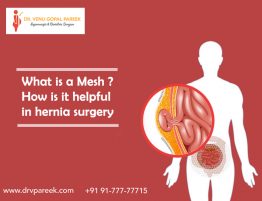
Haemorrhoids are popularly known as piles. They are normal blood vessels located within the anus or lower rectum become swollen due to excess pressure. People with haemorrhoids problems might suffer from anal itching, rectal pain or discomfort, swelling, and rectal bleeding, etc. The causes of Haemorrhoids are many, but the exact cause is yet to be found. The most common cause is said to be; the excess strain on these veins due to constipation, pressure due to pregnancy, and being overweight.
Dr V Pareek, Consultant Advanced Laparoscopic & Bariatric Surgeon at Sunshine Hospitals, Gachibowli, says haemorrhoids can be treated and are also preventable. He says that haemorrhoids are of different types, and various treatment options are available to manage them.
How Haemorrhoids Appear?
In general, everyone has haemorrhoids, and they are the soft cluster of veins that lie just under the mucous membranes lining of the lower rectum and the anus. The condition we are referring to as haemorrhoids or piles develops when these veins swell and distended similar to varicose veins in the legs.
Haemorrhoids are classified into two different types based on the appearance:
1. Internal haemorrhoids that occur in the lower part of the rectum,
2. External haemorrhoids that appear under the skin around the anus. External haemorrhoids are the most common and uncomfortable because the skin overlying becomes irritated and erodes.

If any blood clots are formed inside external haemorrhoids, then it results in sudden and severe pain. You might also feel a lump around your anus. Usually, the blood clot dissolves, leaving excess skin, which might be itchy or irritated.
Internal haemorrhoids are mostly painless, even when they bleed. You can observe bright red blood when you use toilet paper or in the toilet bowl. Internal haemorrhoids sometimes prolapse or protrude out beyond the anus, leading to several potential health problems. When the haemorrhoids protrude out, it may collect a small quantity of mucus and stool particles causes irritation, which termed pruritus ani. If you continuously wipe to relieve itching, the problem might worsen.
Do I Have To Remove My haemorrhoids Right Away?
In most cases, haemorrhoids subside on their own. Removal of haemorrhoids is always not necessary. Most haemorrhoids can be treated through conservative measures. Surgery is suggested when haemorrhoids cause severe pain and become uncomfortable.
Include high fibre food and fluid in your diet, and regular exercise to stimulate your bowel functions. Use a wet cloth to wipe after a bowel movement so that you can avoid irritation of the skin. Over-the-counter medicines such as witch-hazel wipes and analgesic creams might provide you temporary relief.
If surgery is necessary, then there are different types of surgical options which are mentioned below:-
Rubber band ligation
In this procedure, a rubber band is placed around the haemorrhoid base. This helps to treat bleeding or prolapse of internal haemorrhoids. It restricts blood supply, and eventually, the haemorrhoid falls off.
Coagulation
The doctor uses electric current or infrared light and creates scar tissue on haemorrhoids. The tissue restricts blood supply to the prolapse causing it to fall off. Coagulation can help to treat bleeding that is not protruding.
Sclerotherapy
In this procedure, the doctor injects a chemical solution into the haemorrhoids. The solution can relieve pain by making the area around the nerves numb. It also creates scar tissue, and eventually, haemorrhoids fall off.
Hemorrhoidectomy
The surgeon opens the anus gently, and the haemorrhoids are dissected. They make the cut by using various surgical tools like surgical scissors or a laser. After the haemorrhoids are removed, the surgeon seals the wounds.

Haemorrhoid stapling
It is an alternative procedure for traditional hemorrhoidectomy known as stapled hemorrhoidopexy. The process mostly treats internal haemorrhoids. In this procedure, the surgeon anchors the haemorrhoids using a stapling device in their normal position.
Laser Treatment for Piles
Studies show that laser treatment for piles is a safe process with less postoperative pain and quick recovery. There is no need to cut the tissue. The piles are simply treated with high laser energy focused on the problematic area, and the problem is resolved within minutes.
Don’t suffer anymore; put an end to painful piles with the painless laser treatment. The modern era is all done with painful surgeries that take hours of time. Consult Dr V Pareek, an expertise in treating fistula or fissures with advanced laser treatment, which takes very little time and has less recovery time.
Remember, surgery is not the only option for piles, to know more about treatment for piles, consult the doctor as soon as possible. Neglecting the condition can turn it out to be a chronic condition.







